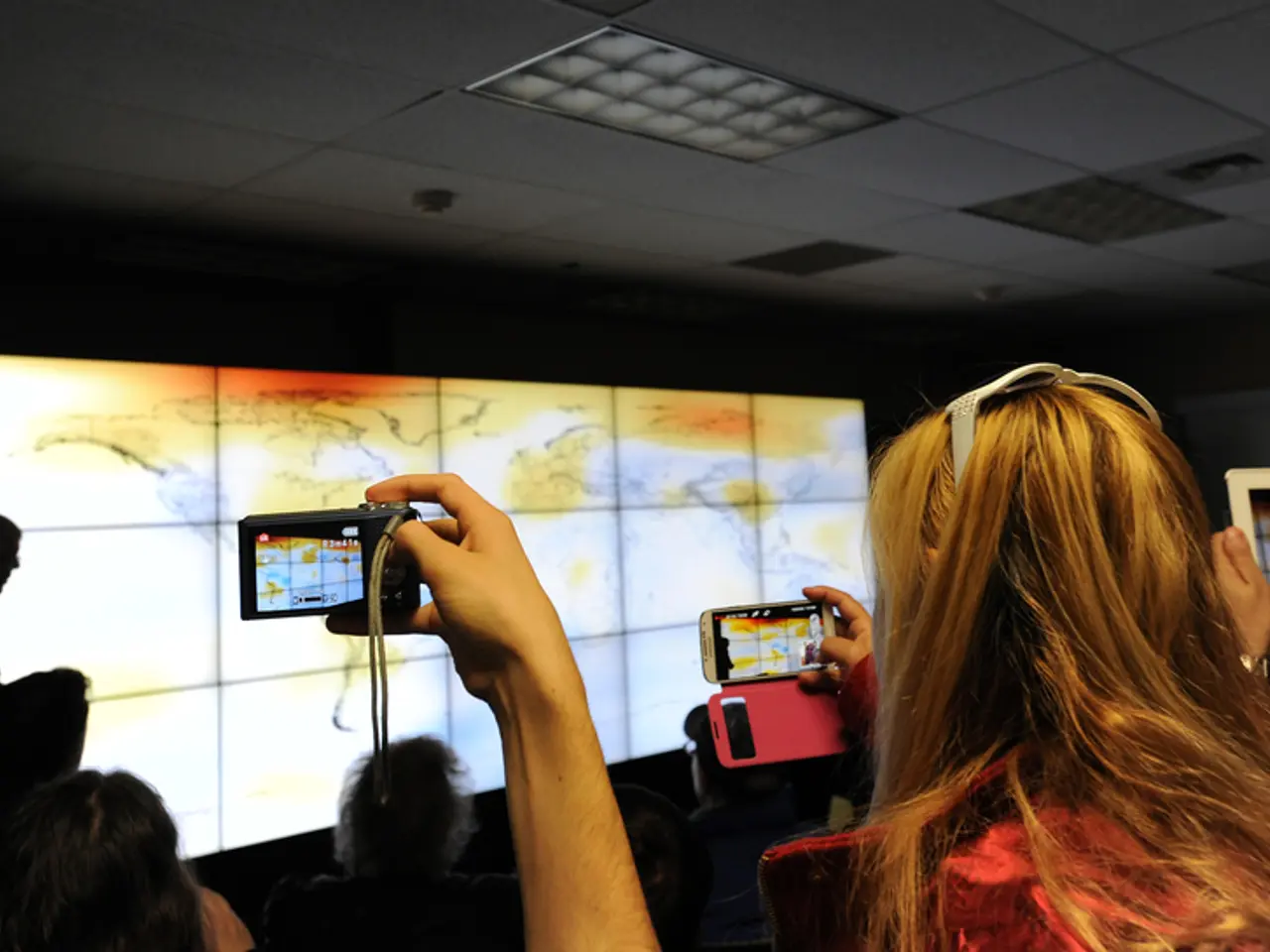Study Case: Development of a Speedy Video Processing Circuit
=====================================================================================
In the ever-evolving world of technology, Sierra Circuits has made a significant stride with the design of a high-speed video PCB that finds applications in various sectors, including automotive, healthcare, consumer electronics, defense, aerospace, and more.
The PCB, a 10-layer board sized 9" x 3" (228.6 x 76.2 mm), is no ordinary board. It boasts 4 power layers and 6 signal layers, with controlled impedance traces of 100 Ohms differential and 50 Ohms single-ended, ensuring signal integrity. The board's memory interface is DDR3 with 800MHz, a high clock rate and large storage capacity.
The team at Sierra Circuits meticulously analyses the operating frequency of the circuit board to determine if a high-speed design is necessary. For instance, RF Bluetooth of 2.4 GHz was considered in this high-speed video board, which transmits signals over a shorter distance using high-quality radio waves.
In the automobile industry, high-speed video boards are used to facilitate navigation systems, control systems, and sensors. Similarly, in the military and aerospace sectors, these boards play a crucial role in strategic defense equipment like missiles. Consumer electronic devices, such as computers and smartphones, have implementations of high-speed video boards to support high-resolution. In the healthcare industry, high-speed video boards are used in advanced medical equipment, diagnostics, and monitoring devices, with miniaturized cameras playing a vital role in diagnostics.
The design process at Sierra Circuits involves careful consideration of the PCB material based on the operating frequency and other specific requirements. Low-loss, low-dielectric-constant (low-Dk) substrate materials are selected to minimize insertion loss and electromagnetic interference (EMI). Advanced materials such as Isola FR48 HR or Rogers laminates with Dk less than 4 are used, which reduce insertion loss and EMI while supporting high signal speeds needed for video.
The team also emphasizes the use of low-profile copper to minimize conductor loss and careful PCB layout with multilayer or HDI (high-density interconnect) boards to effectively isolate analog and digital signals, reduce noise, and manage crosstalk. Thermal considerations include dense via stitching and copper planning to dissipate heat efficiently without compromising signal integrity.
Challenges in the design process include managing signal integrity at high frequencies, minimizing crosstalk and EMI, controlling thermal dissipation in compact layouts, and maintaining manufacturing reliability. To address these challenges, Sierra Circuits integrates thorough design for manufacturability (DFM) analysis, ensuring footprint accuracy, and providing detailed fabrication and assembly documentation to prevent production delays and errors.
The high-speed PCB Design Guide, a comprehensive resource offering explanations of signal integrity issues, understanding transmission lines and controlled impedance, and more, is available for download on the Sierra Circuits website. This guide, spanning 8 chapters, 115 pages, and a 150-minute read, is a testament to Sierra Circuits' commitment to sharing knowledge and fostering innovation in the PCB design community.
The board design was challenging due to its irregular shape, as it had to fit into a specific form factor. Despite this, the team fixed suitable design rules to ensure the board is easily manufacturable while maintaining all specifications and high performance. The placement of components was difficult on the dense board, with specific requirements for the location of connectors.
In summary, the core design considerations and challenges for Sierra Circuits’ high-speed video PCBs revolve around material selection for minimal signal loss, precise impedance and layout control to maintain signal integrity, effective EMI/EMC strategies, and robust thermal management within compact geometries, all executed with thorough manufacturing readiness.
Science and data-and-cloud-computing play significant roles in the development process of Sierra Circuits' high-speed video PCBs. By utilizing advanced materials and carefully designed layouts, the team ensures controlled impedance on the traces, which is crucial for maintaining signal integrity. This data is then processed and analyzed to optimize the board's performance, making the design more efficient and effective in various operating environments, such as automotive, healthcare, defense, aerospace, and consumer electronics.




